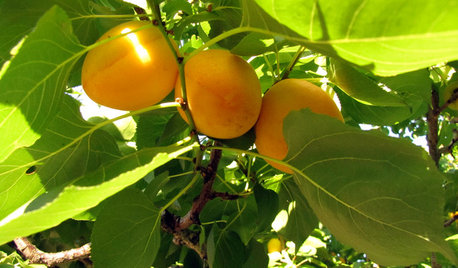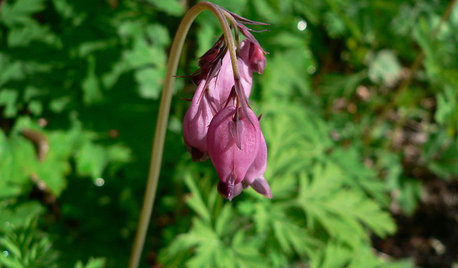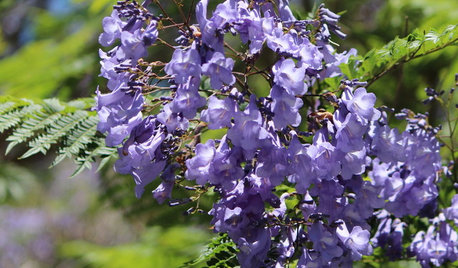Is my apricot tree 'bleeding'?
devilwoman
15 years ago
Related Stories

EDIBLE GARDENSHow to Grow Your Own Apricots
Velvety fruit, pretty blossoms and interesting bark make apricot trees a delight — and they’re great for smaller gardens
Full Story
GARDENING GUIDESGreat Design Plant: Western Bleeding Heart
Delicate heart-shaped flowers belie a tough nature in this woodland spring perennial
Full Story
EDIBLE GARDENSGrow Plum Hybrids for Your Favorite Fruit Flavors
Plums are cozying up with apricots, peaches and even cherries — here’s how to grow these hybrids for the best aspects of each
Full Story
CALIFORNIA GARDENINGCalifornia Gardener's July Checklist
Bite into tree-fresh apricots, inhale delightful garden perfumes and continue planting vegetables for a late-summer harvest
Full Story
FARM YOUR YARDIf You Have Room for Only One Fruit Tree ...
Juice up a small garden with one of these easier-care or worth-the-effort fruit trees for a mild climate
Full Story
EDIBLE GARDENSHow to Grow 10 Favorite Fruit Trees at Home
Plant a mini orchard in fall, winter or early spring to enjoy fresh-off-the-tree fruit the following year
Full Story
SPRING GARDENING7 Spectacular and Practical Spring-Flowering Trees
Put on a beauteous show in the garden with a landscape tree awash in flowers — just do your homework first
Full Story
ARBOR DAY8 Reasons to Plant a Great Tree
Beauty is its own reward, but the benefits of planting the right tree in the right place go way beyond looks
Full Story
LANDSCAPE DESIGN7 Great Trees for Summer Shade and Fall Color
These landscape-pro faves straddle the seasons beautifully. Could one enhance your own yard?
Full Story
EDIBLE GARDENSHow to Grow Your Own Luscious Cherries
Nope, they’re not the easiest fruit to grow. But with spectacular blossoms and pies as possibilities, cherries are sure worth a try
Full Story






Okiedawn OK Zone 7
devilwomanOriginal Author
Related Professionals
Piqua Landscape Architects & Landscape Designers · Alexandria Landscape Contractors · Bainbridge Island Landscape Contractors · Belmont Landscape Contractors · East Haven Landscape Contractors · Homewood Landscape Contractors · Middle River Landscape Contractors · Salem Landscape Contractors · Oxon Hill Landscape Contractors · Hawaiian Gardens Landscape Contractors · Bloomington Decks, Patios & Outdoor Enclosures · New Lenox Decks, Patios & Outdoor Enclosures · Pataskala Decks, Patios & Outdoor Enclosures · Roanoke Decks, Patios & Outdoor Enclosures · Saint Louis Park Decks, Patios & Outdoor EnclosuresdevilwomanOriginal Author
Okiedawn OK Zone 7
devilwomanOriginal Author
jayboyok
Okiedawn OK Zone 7
devilwomanOriginal Author
Okiedawn OK Zone 7
devilwomanOriginal Author
rjj1
Okiedawn OK Zone 7
rjj1
Okiedawn OK Zone 7
devilwomanOriginal Author
Okiedawn OK Zone 7
devilwomanOriginal Author
jessaka
Okiedawn OK Zone 7
jessaka
jessaka
devilwomanOriginal Author
jessaka
jessaka
devilwomanOriginal Author
Okiedawn OK Zone 7
jessaka
Okiedawn OK Zone 7
jessaka
Okiedawn OK Zone 7